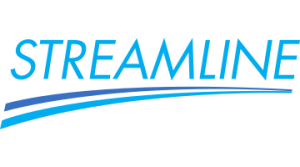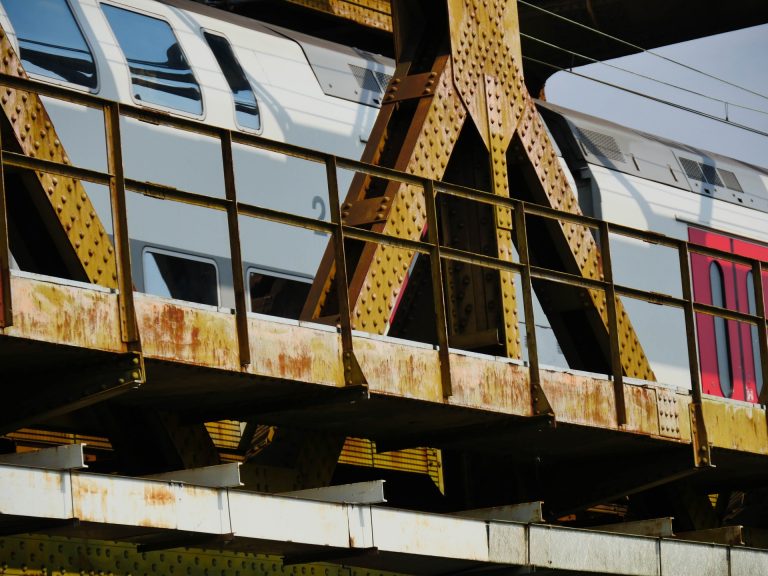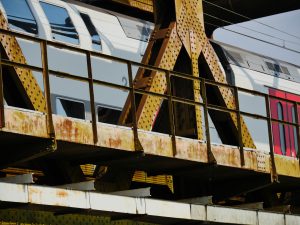A train accident in Luxembourg tragically shows that improvements in the European railway licensing process are essential. IKEM’s project Streamline aims to achieve faster and more cost-effective licensing procedures that will make train traffic safer and more attractive. This will also help to make transportation more sustainable by reducing disadvantages for this climate friendly type of transport.
Concerning environmental impact, railway transportation is superior to cars and airplanes in many ways. Especially on longer distances, trains promise higher energy efficiency as well as lower pollutant and greenhouse gas emissions. Nevertheless, road traffic dominates the transportation sector, which means that in 2014 only 6.5 per cent (passengers) and 11.7 per cent (freight) of all traffic in Europe were carried out with trains
1]
. The reasons for these low numbers are manifold, but an important aspect certainly is the lack of interoperability of national railway systems. While cars and trucks are allowed to travel on roads in all parts of Europe, trains need technical systems and approvals that comply with the respective national regulations and train safety systems. Cross-border rail transport is therefore accompanied by numerous bureaucratic hurdles and is often only possible if expensive multi-system trains are used. Therefore, only a few attractive Trans-European mobility offers are currently in existence.
Strengthening rail transport by harmonizing national regulations and licensing processes could therefore make an important contribution to climate protection. The European Train Control System (ETCS), which has been developed since the 1990s, is an approach to the harmonization of train control technology. The implementation of ETCS is being pursued in many EU Member States, but the system is still incomplete. Unfortunately, the shortcomings already lead to various accidents in cross-border traffic. In the middle of February, a train accident occurred at Bettemburg in Luxembourg. A freight train (No. 4980) and a passenger train (TR88807) collided on the line between Luxembourg and the French Thionville. Apparently, the passenger train driver had previously crossed a red stop signal – he died in the collision, four passengers were seriously injured. As early as 2006, a serious accident with six deaths occurred on the same section of the route.
The Luxembourg-based railway company, Chemins de Fer Luxembourgeois (CFL), said at a press conference that the accident could have been prevented with the security system ETCS
2]
. Trains controlled by ETCS can be automatically stopped when the speed is too high or when the train passes a stop signal without authorization. ETCS was installed both in the passenger train and on the track, but the efficient system was not used because the approval of the railway authority for the French section was missing. For this reason, the system had to be switched off at the start of the journey at Luxembourg railway station.
The accident in Luxembourg shows that the harmonization of European rail transport is urgently needed. Despite all efforts, there are different ETCS standards as well as national amendments. In addition, ETCS approval procedures are often slow. A complex set of actors and inadequate market information lead to unnecessarily long and costly admission procedures.
IKEM is addressing the considerable potential for simplification and acceleration for ETCS with the research project Streamline. The purpose of the study was to evaluate the approval process of ETCS vehicle devices through surveys with stakeholders involved in the approval procedure. The analysis of the responses showed that national specificities should be abolished promptly and be transferred into uniform European standards. A train approved on the basis of such criteria should be allowed to operate on routes with comparable infrastructure (and existing ETCS) in any EU Member State. Furthermore, the national bodies participating in the approval process (DeBos and AssBos) should be subjected to a comparison in order to make the best use of existing capacities and enable a fast licensing procedure. The study’s results will be published shortly and will give new impetus to the discussion regarding the improvement of the approval process.
This is also relevant for the reformed European Union Agency for Railways (formerly ERA). With the so-called technical pillar of the fourth railway package, the approval procedure for railway vehicles was modified in 2016. For the first time, the approval falls within the competence of the Agency for Railways. For authorizations regarding the territory of only one EU member state, the Agency as well as the national authorities have the same authority. The Agency has exclusive competence in cases that cover more than one member state. However, the Agency currently does not have any mechanisms to sanction member states that continue to apply national specificities in licensing.
This legal framework should be evaluated on an ongoing basis. In order to do so, IKEM plans to implement successor projects for Streamline. The objective must be to make use of the opportunities offered by a more harmonized approval process across Europe, without complicating the process by creating an additional actor. This will strengthen cross-border rail transportation by reducing disadvantages for this climate friendly type of transport.
Authors:
Malte Preuss / Dennis Nill
Tel. +49 (0)30 408 18 7010
malte.preuss@ikem.de / dennis.nill@ikem.de
Contact Person:
Simon Schäfer-Stradowsky
Magazinstraße 15-16 , D-10179 Berlin
Tel. +49 (0)30 408 18 7010
simon.schaefer-stradowsky@ikem.de [align_center]Streamline Website: Link



